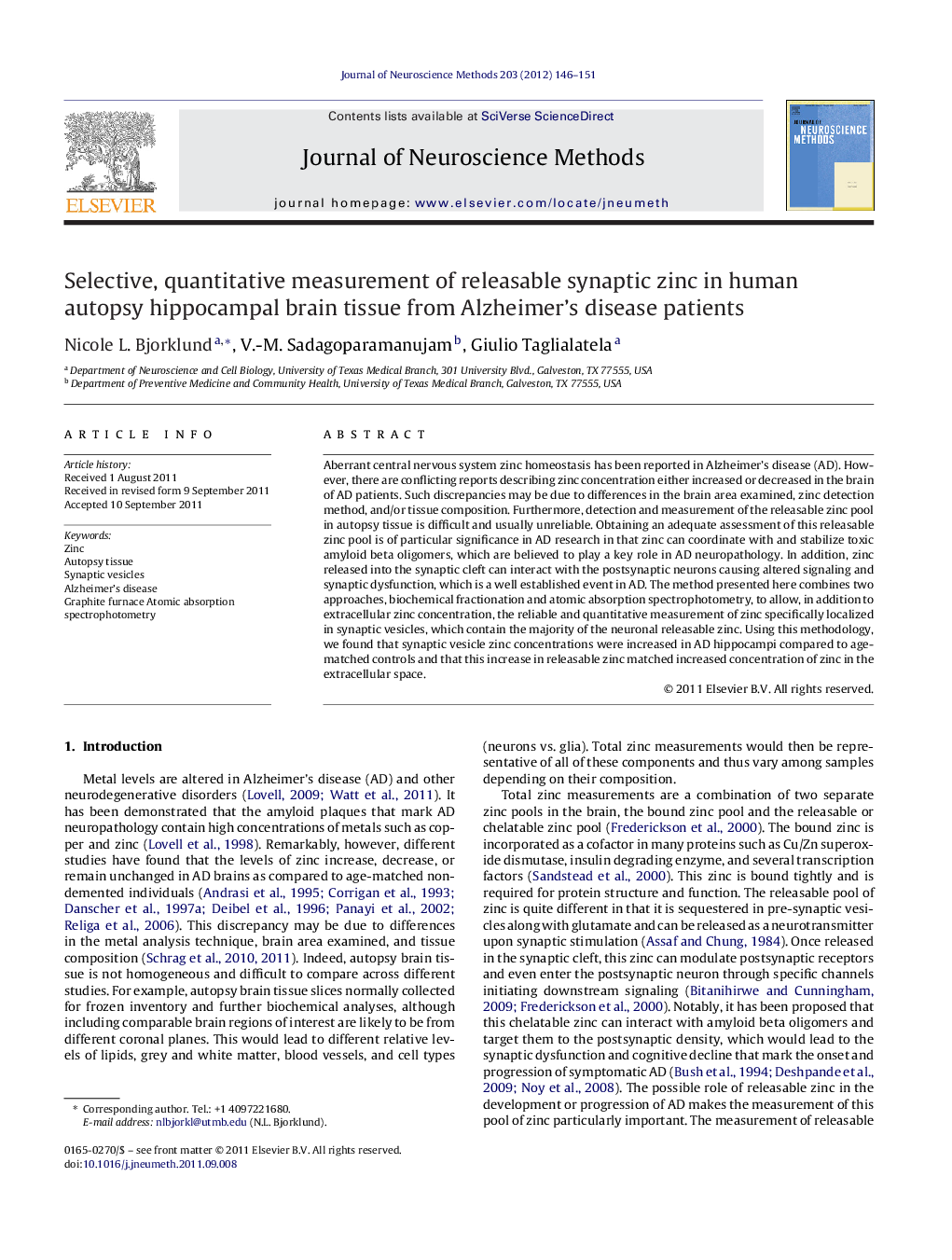| Article ID | Journal | Published Year | Pages | File Type |
|---|---|---|---|---|
| 6269207 | Journal of Neuroscience Methods | 2012 | 6 Pages |
Aberrant central nervous system zinc homeostasis has been reported in Alzheimer's disease (AD). However, there are conflicting reports describing zinc concentration either increased or decreased in the brain of AD patients. Such discrepancies may be due to differences in the brain area examined, zinc detection method, and/or tissue composition. Furthermore, detection and measurement of the releasable zinc pool in autopsy tissue is difficult and usually unreliable. Obtaining an adequate assessment of this releasable zinc pool is of particular significance in AD research in that zinc can coordinate with and stabilize toxic amyloid beta oligomers, which are believed to play a key role in AD neuropathology. In addition, zinc released into the synaptic cleft can interact with the postsynaptic neurons causing altered signaling and synaptic dysfunction, which is a well established event in AD. The method presented here combines two approaches, biochemical fractionation and atomic absorption spectrophotometry, to allow, in addition to extracellular zinc concentration, the reliable and quantitative measurement of zinc specifically localized in synaptic vesicles, which contain the majority of the neuronal releasable zinc. Using this methodology, we found that synaptic vesicle zinc concentrations were increased in AD hippocampi compared to age-matched controls and that this increase in releasable zinc matched increased concentration of zinc in the extracellular space.
Graphical abstractDownload full-size imageHighlights⺠Zinc homeostasis is altered in Alzheimer's disease. ⺠Synaptic vesicles were isolated from Alzheimer's disease (AD) and age-matched frozen hippocampal autopsy tissue. ⺠Graphite furnace atomic absorption spectrophotometry (GF-AAS) was used to measure zinc in the synaptic vesicles. ⺠Synaptic vesicle zinc or chelatable zinc was significantly increased in AD hippocampal samples. ⺠The combination of biochemical fractionation and GF-AAS allows quantitative analysis of chelatable zinc concentration from autopsy tissue.
